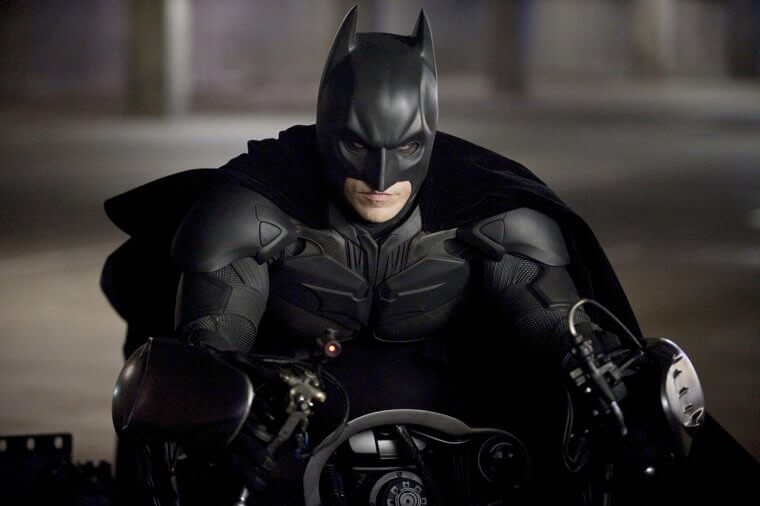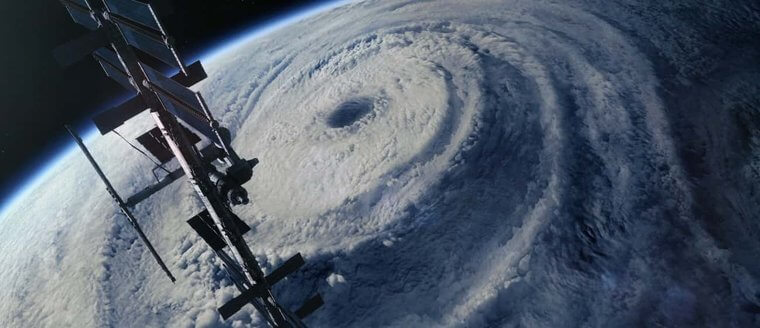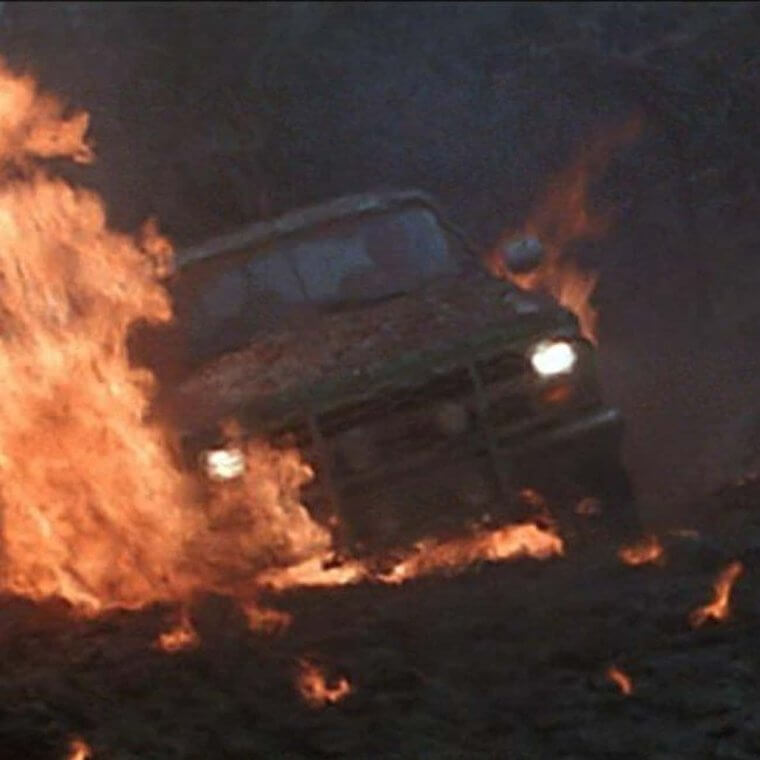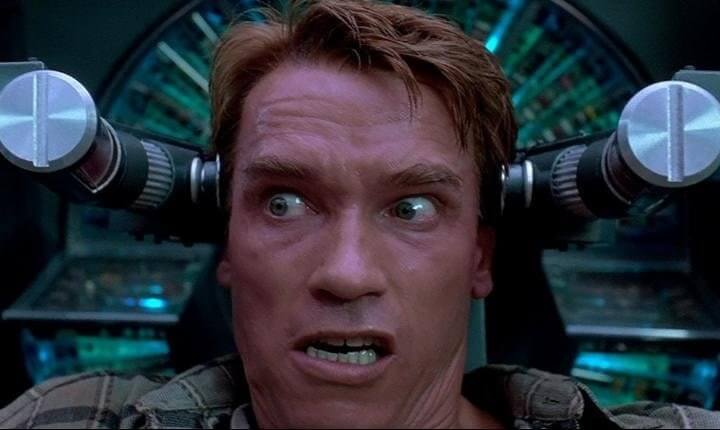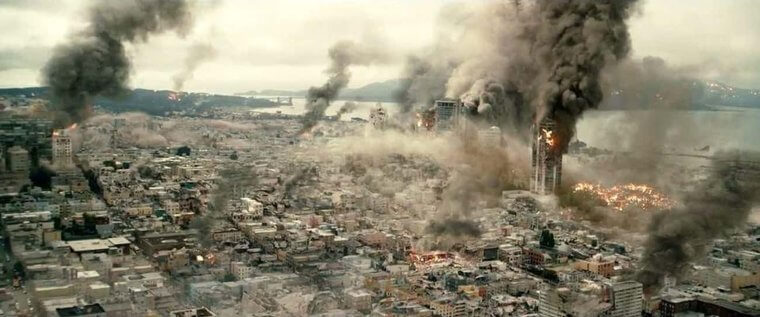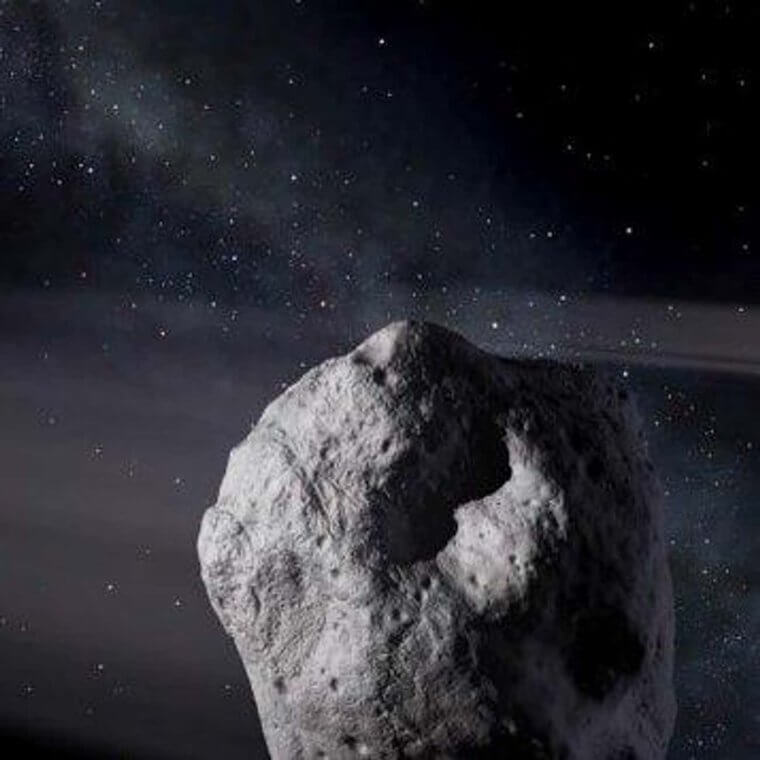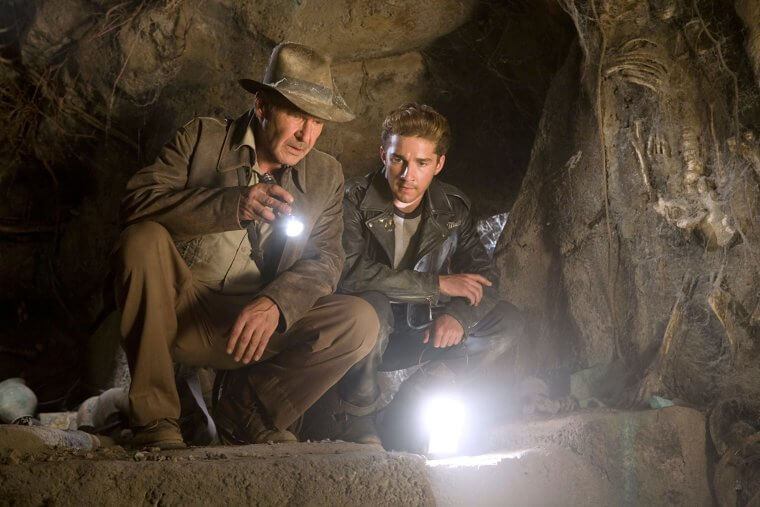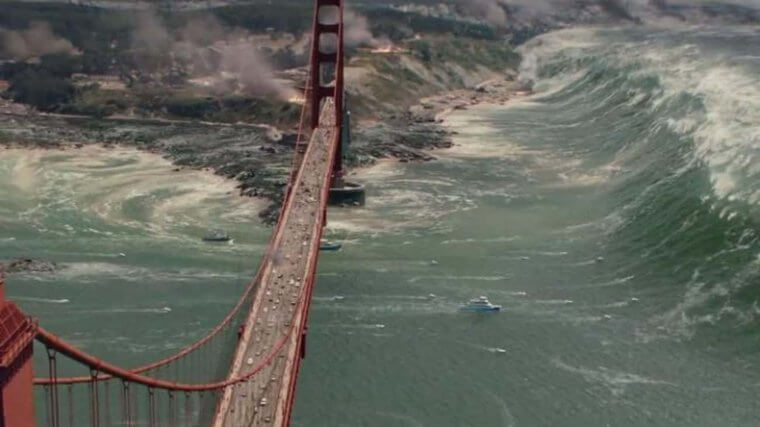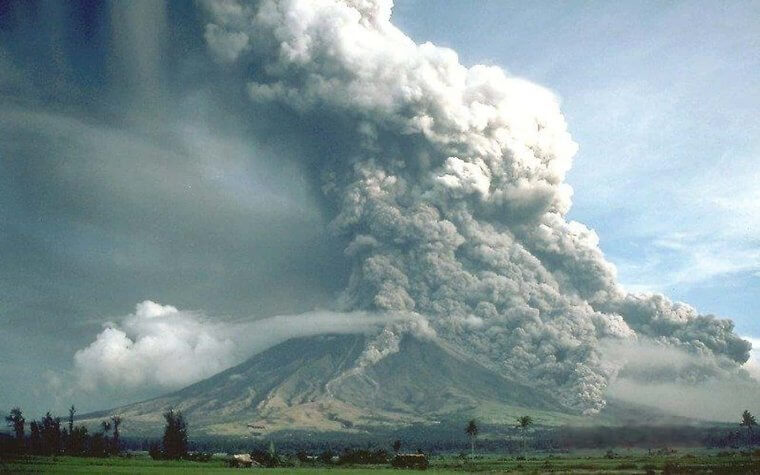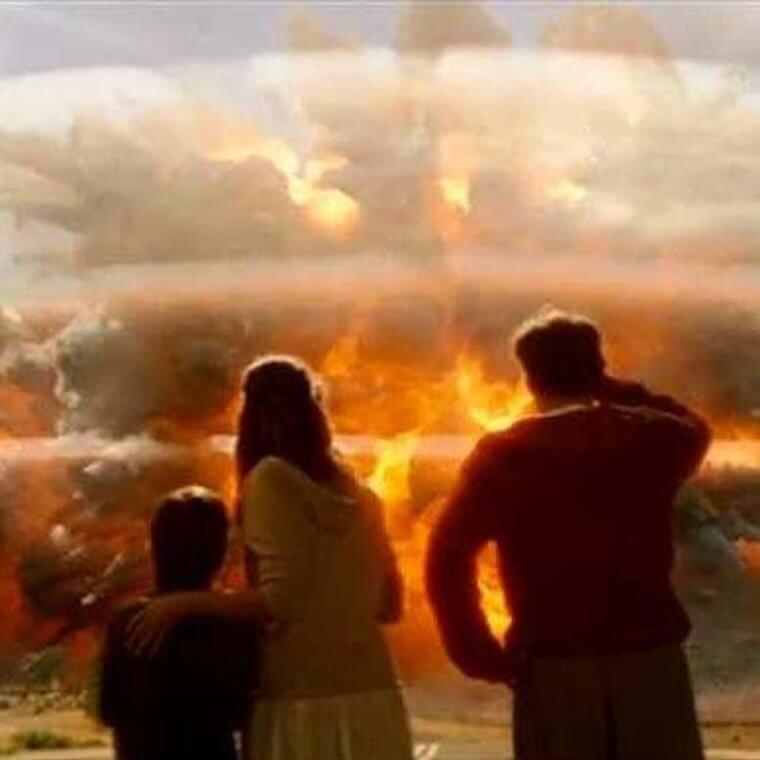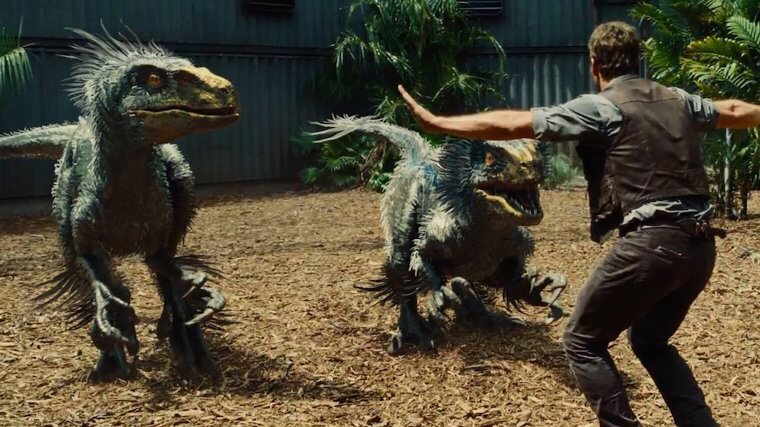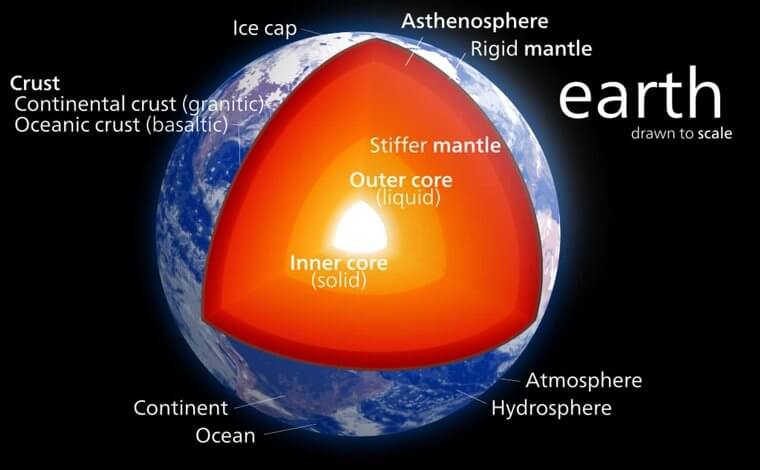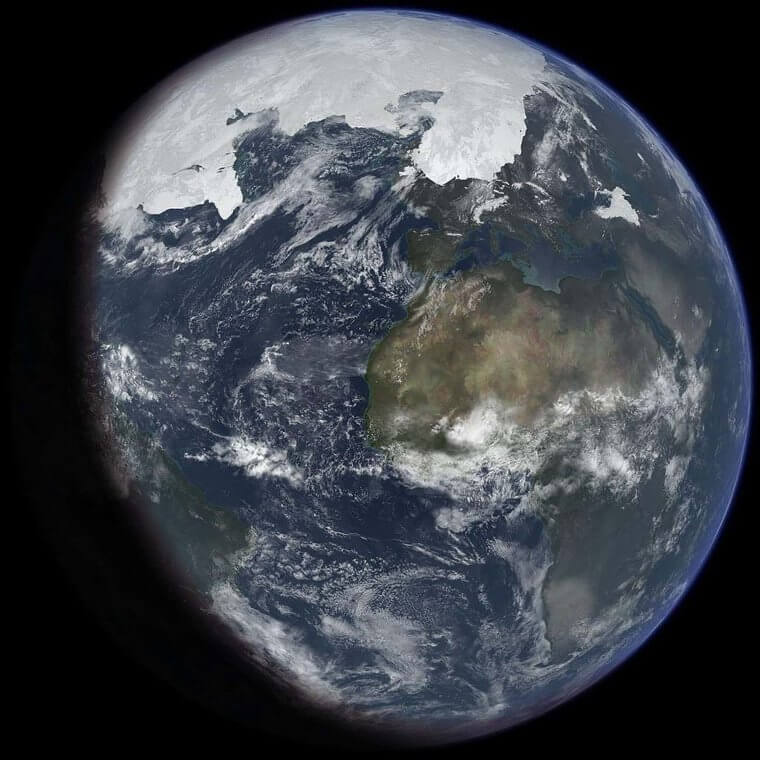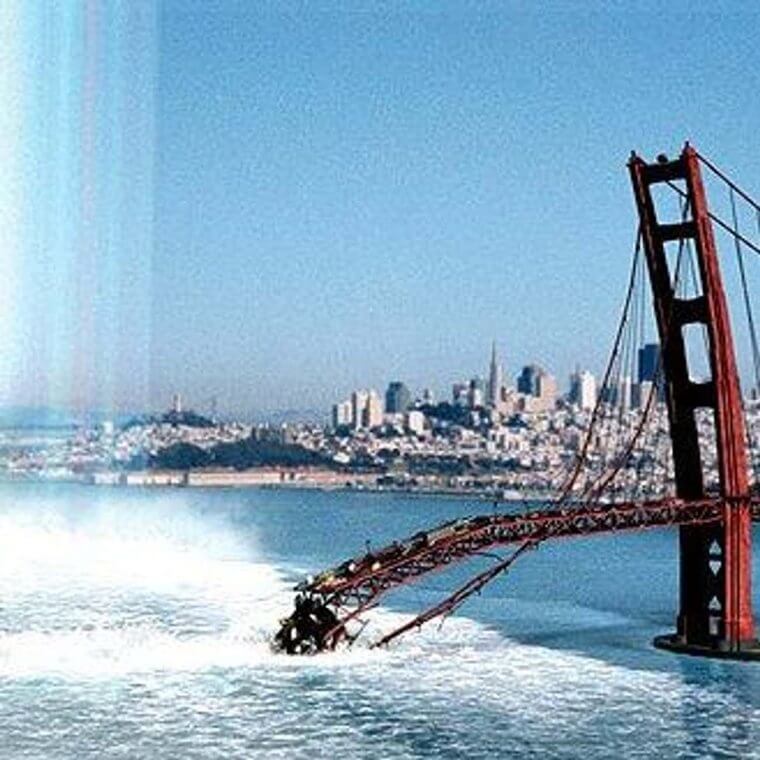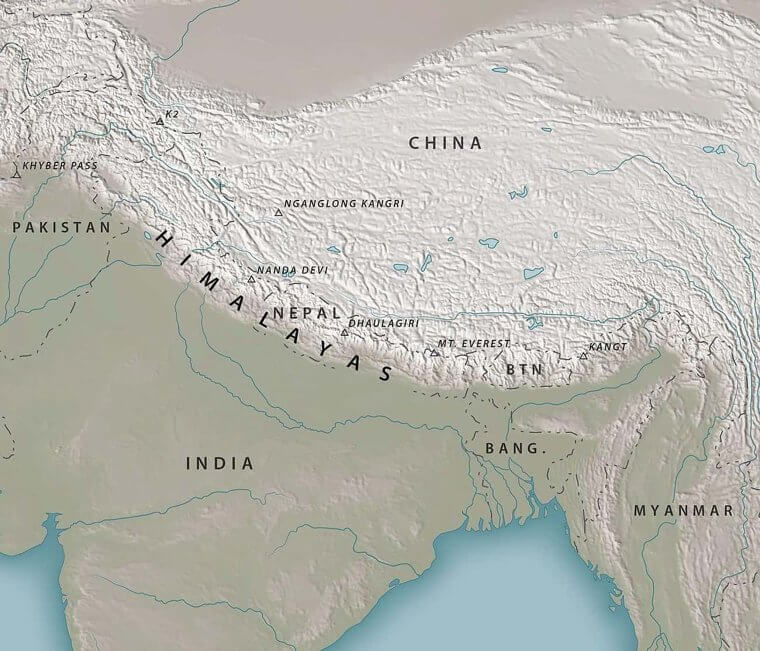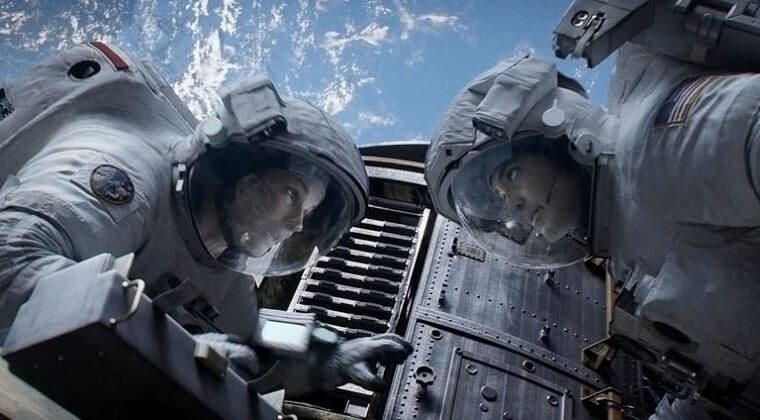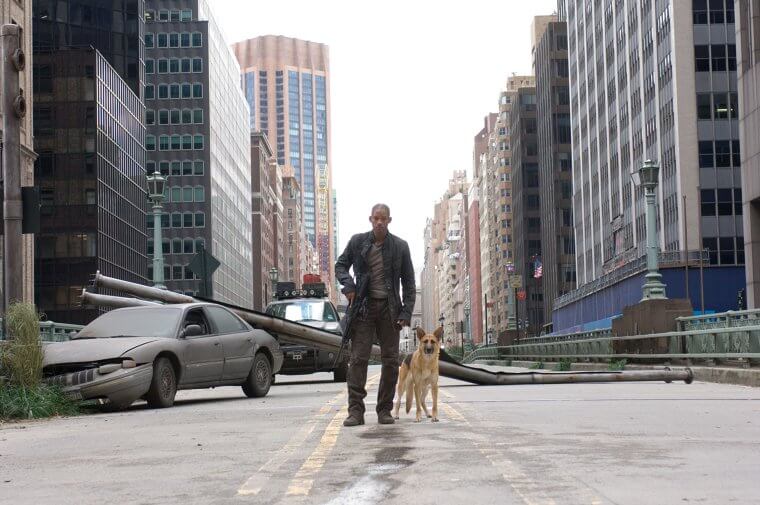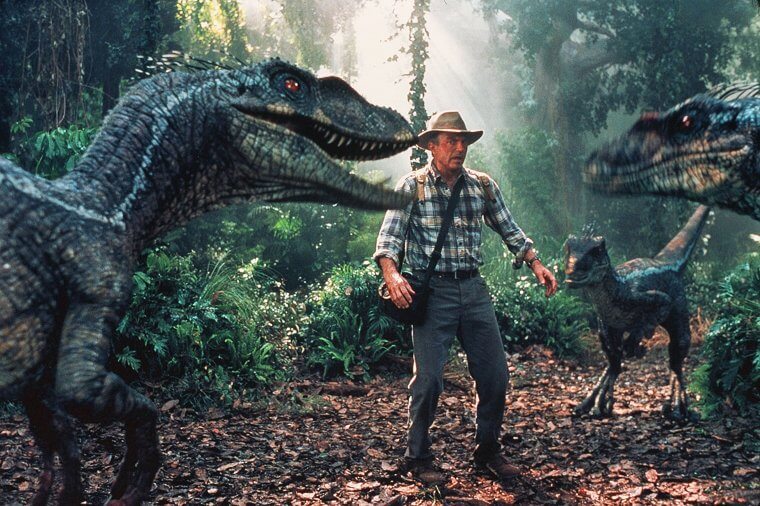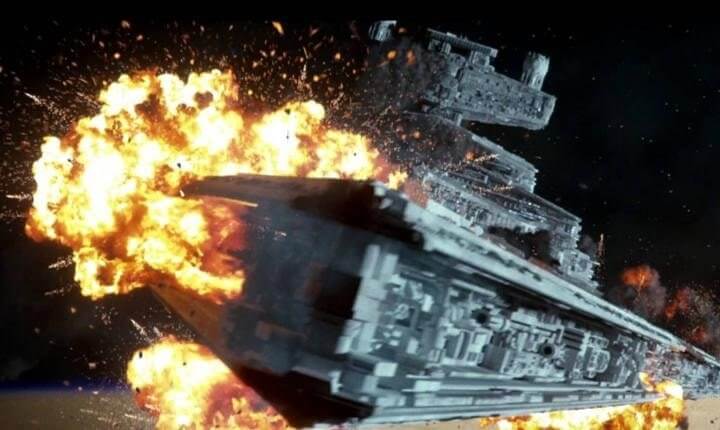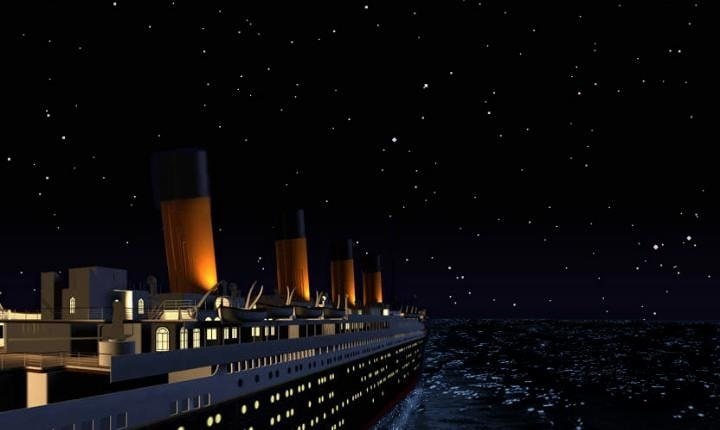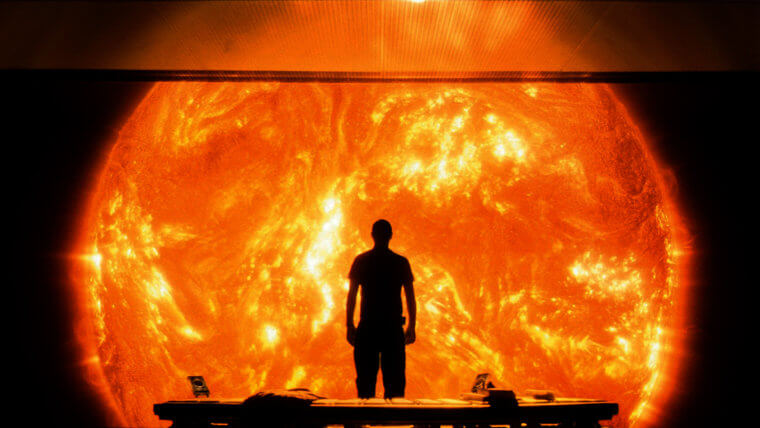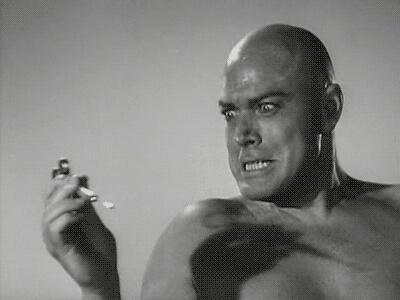This article was originally published on 24/7Mirror
The Dark Knight Rises' Impossible Doomsday Weapon
The Dark Knight Rises is the third movie in the much-acclaimed Batman movies directed by Cristopher Nolan, and while they're heralded for their dark and gritty atmosphere and grim approach to the classic superhero narrative, there are a few scientifical inconsistencies in the last installment of the series. Towards the end of the film, Batman risks it all in order to save Gotham, flying a nuclear explosive away from the city and into the ocean.
The problem resides within the weapon itself - a reactor repurposed as an atomic bomb. You can't do that; not if you're going by what we know about nuclear science.
Despite What the Creators of Lucy May Think, We Use Pretty Much All of Our Brainpower
Lucy is a movie about a wild accident; gangsters coerce a woman into smuggling illegal substances within her stomach, only for the bag to break and the substances to enter her system. When this happens, our heroine Lucy activates the dormant 90 percent of her brain that most people never use. This extra brainpower makes her pretty way smarter and more capable than your average joe. There are, however, a few huge problems with this plot.
The biggest problem is that the whole 10 percent of our brain thing is straight-up false. We use every single part of our brain; every single area is always active.
Earthquakes Seem to Be Conscious in Many Disaster Movies
Earthquakes are quite resentful creatures, aren't they? Wait, what do you mean earthquakes can't harbor feelings or thoughts and that they're basically inanimate symptoms of natural processes? Then how would you explain the fact that they seem to follow cars everywhere or split the earth between two lovers, forcing them to stand on opposing sides and many other earthquake shenanigans? It really seems as though Hollywood directors think earthquakes are living, thinking things.
But they're not, really. Earthquakes don't chase people or cars in real life. They just sort of happen and indiscriminately tear apart the earth. Nature isn't much for holding grudges.
The Day After Tomorrow's Impossible Storms
We do have give credit to The Day After Tomorrow where it's due - the movie did repeatedly state that the magnificent storm that swept up the entire world was not a hurricane. The thing is, though, is that it behaves exactly like a hurricane, except for the fact that it's also an impossibly cold snowstorm (seriously, the thing is stated to be colder than the coldest part of the troposphere).
Oh, and did we forget to mention that the eye of this non-hurricane is the most dangerous and coldest part of the storm despite the fact that the eye of a hurricane has the lowest pressure of anywhere in the storm? Yeah, no chance.
The Entirety of The Matrix Is Based on a Crucial Miscalculation
This may actually be a good thing, given how it drastically reduces the chance of us becoming the fuel with which omnipotent AIs run their society. What The Matrix didn't get right is the fact that the human body, even when it is completely rested, requires a hefty amount of energy to keep alive. The energy that the machines would be able to excavate from the humans would be far lesser than the energy it would take to keep those humans alive.
Basically, the fundamental laws of thermodynamics actually did something good for once: they've ruled out any possibility of us becoming enslaved to robot overlords milking us for energy. Bullet dodged.
Armageddon's Nonsense Asteroid Behavior
So we're going to be really clear about this - despite what the writing team of Armageddon may have told us, there are very few things that can affect a 990-mile-wide asteroid. Yeah, not even a comet. The super asteroid featured in Armageddon may be the closest we could ever get to a physical amalgamation of the term "unstoppable force." The fact that it's composed of straight-up iron isn't doing us any favors, either.
If an asteroid as absolutely humongous as that were heading Earth's way, we'd be better off getting on our knees and praying for it to change its mind and turn back.
Dante's Peak And It's Room Temperature Lava Eruptions
So, the creators of both Dante's Peak and Volcano may want to drill this in their heads: lava is hot. Like, really hot. Hotter than an oven, 1,500 degrees Fahrenheit hot. And yet, anyone who's watched one of these movies could attest to the characters nonchalantly skipping over lava, climbing out and over it on a ladder, and just generally vibe around it as long as they're behind a small concrete barricade.
This definitely should not be attempted in real life, where most people tend to collapse from heat exhaustion in much, much colder conditions. A general rule of thumb for life could be: get the heck away from lava.
Total Recall Needs A Total Science Makeover
While Total Recall does exemplify some of the implicit dangers of space colonialization, it does, however, exaggerate a few of its hazardous aspects. This makes sense, given that it's a movie and it's supposed to be entertaining and dramatic, but that doesn't mean we can just ignore the science blunders. One thing the movie gets pretty inaccurate is decompression. The film depicts decompression as though the characters were Looney Tunes characters.
In reality, decompression would be a lot more subtle. Furthermore, the exposure to the alien environments that lead to some of the characters' passing would be much slower and tamer.
For Some Reason Everyone Thinks a Californian Earthquake Will Be Impossibly Huge
Some people at Hollywood have some pretty sick disaster fantasies, given how much they like to depict California getting pulverized by a wide variety of natural forces. And yet, the undisputed kings of beating California to a pulp would have to be earthquakes. For some reason, everyone in Hollywood thinks that an earthquake in California would be impossibly huge. We're talking, "there's not enough earth in the world to make an earthquake like that" kind of huge.
To create such a monstrous earthquake, the tectonic plates would need to slide underneath each other. That sort of tectonic rift just can't occur in California, the terrain isn't built for it.
How Did Everyone In Armageddon Miss That Enormous Asteroid in the Sky
The thing about Armageddon's asteroid is that it has a real-life counterpart. Ceres, the name of the asteroid, is huge. It's so huge, in fact, that it's the largest asteroid in our asteroid belt and is technically considered a dwarf planetoid. It's so big that if you know your way around the stars, you could probably see it from the sky. The asteroid's size in Armageddon is approximately 995 miles.
Given the fact that's roughly the size of Texas, it's safe to say that pretty much everyone would be able to spot the giant rock crashing into our beloved planet Earth.
The Writers of "The Core" Really Don't Get Radiowaves
We don't what kind of fever-dream-related hallucinations came over the writing team behind the script of The Core, but we do know this: they could not for the life of them get the science of the Earth's core right. A glaring example of their inaccuracy would be the fact that throughout the film, the main characters can be seen communicating with each other with radiowaves. Yeah, that's right - radiowaves.
The thing about sound waves is that they can travel a depth of a few kilometers, tops. So underground team communicating with people above the surface just isn't possible in reality.
News Flash: Fridges Aren't Nuclear-Weapon-Proof
The Indiana Jones series is one of the most beloved movie franchises in Hollywood history; there's no arguing about that. And yet, there's one film in the series that seems to stick out like a sore thumb, and that would be the latest installment: Indiana Jones and the Kingdom of the Crystal Skull. A large amount of die-hard fans found a lot to criticize the movie for, and we too have our specific gripe with it.
Near the beginning of the movie, Indiana Jones finds himself in a nuclear testing site. To protect himself from the impending nuclear explosion, Jones hides inside a fridge. Yeah, a fridge. Enough said.
San Andreas Gets Tsunamis All Wrong
Hey, it's another instance of a Hollywood blockbuster depicting California getting absolutely wrecked, and guess what - it also got its science stuff all wrong! There are two things wrong with the tsunami in San Andreas: first of all, an earthquake on the San Andreas fault could never cause such a huge tsunami due to the fact that the San Andreas fault is a slip strike fault. Basically, an earthquake in San Fransico couldn't create such a tsunami.
What's more, a tsunami can only be as high as the bay is deep, and given that the tsunami is smack-dab on the continental shelf, that just doesn't make sense. Also, the wave would look more like a huge rising tide, and not a monstrous surfer wave.
Think Pyroclastic Clouds Are as Slow as Turtles? Think Again
It's a common misconception that incredibly dangerous, super-heated clouds composed of deadly gas and ash move really slow. When you think about it, it's no surprise that people tend to believe this: they look at the way that ordinary clouds move and say: "Oh, those clouds won't be going anywhere anytime soon." But the fact is that even normal clouds move at approximately 30-120 miles per hour. Yeah, pretty fast.
What about those deadly toxic clouds? Well, they can travel at a staggering speed of approximately 450 miles per hour. Yeah, good luck getting away from that thing on foot.
2012's Super Volcano Eruption? Yeah, No Big Deal
When Mount St. Helens famously erupted in 1980, it was recorded as one of the most catastrophic and deadliest natural disasters in U.S. history. The blast was equal to the impact of 27,000 Hiroshima-sized nuclear weapons. In the film 2012, the Yellowstone supervolcano erupted. The last time this happened, about 174,000 years ago, it covered all of what came to be the U.S. in volcanic ashes. That's pretty insane, if you ask us.
And yet, the protagonists of 2012 don't seem to mind that much. They just kind of stared at the Yellowstone eruption while enjoying the view unscathed. In no world does that make sense.
Jurassic World Ignored Some Key Dinosaur Discoveries
Where are the feathers? Look, as a person grows up, we tend to be less forgiving when he blunders big-time. This makes sense, the mischievous acts of a developing child carry different weight when performed by a fully-grown adult. The same could be said for the Jurassic Park movies; while the first one got a lot of things about dinosaurs very wrong, it was made in a time that predated some major dinosaur discoveries.
On the other hand, Jurassic World was made after some major dinosaur breakthroughs, one of those being the fact that dinosaurs probably had feathers. Feathers, we say! And yet, the feathers in Jurassic World are nowhere to be seen!
The Team Behind "The Core" Need to Know This About Caves
So we've been dunking on the people behind the movie The Core for quite a bit now; nevertheless, there's more to be said, and we're not going to stop until we've said it all! The thing is about the depths of the Earth is that the deeper you go, the less spacious it becomes, with the density of rocks getting greater and greater due to the increase in the Earth's pressure.
This makes finding any huge caves to spelunk and explore pretty much impossible. The hollow interiors and vacuous spaces of caves just aren't a thing in the depths of the Earth.
Ice Ages Seem to Be Getting Increasingly Faster in Disaster Movies
Disaster movies have a tendency to speed up natural processes, depicting things that take years, if not centuries, in a matter of days or even hours. This makes sense - it is incredibly hard to make such long processes seem dramatic on the big screen. A huge, surprising, cataclysmic event makes for a much better shot. The team behind The Day After Tomorrow are definitely guilty of this, but they aren't the only ones.
In the film, an ice age occurs in approximately three days. Needless to say, that goes beyond everything we know about the natural world. Admittedly, it is pretty cool though.
Apparently All the Characters in Dante's Peak and Volcano Can Just Breathe Toxic Ash
So we've all heard about the disastrous effects of second-hand smoke, right? Well, imagine the effects of second-hand toxic, fiery ash. If you're wondering what breathing in such hazardous stuff does to the body, we don't recommend watching Dante's Peak or Volcano, given that none of the characters in these movies seem to mind breathing in the toxic air. This, needless to say, is impossible and actually quite funny if you think about it.
Such toxic ash wouldn't just threaten the life of anyone unlucky enough to get in its vicinity, it would also corrode their car and basically wreck everything in its way.
The Laws of Physics Apply to Everything (Except Suspension Bridges)
We won't deny that those twisting and turning suspension bridges make for some of the most entertaining and fantastic shots in action movie history, but, unfortunately, they just aren't that scientifically accurate. In this photograph, taken from San Andreas, the suspension towers on the bridge are bending inwards for some unknown reason. If such a bridge were to be cut in the middle, the towers would obviously not bend forwards but backward.
This really isn't that much of a big deal, but it is nonetheless inaccurate. We'll definitely give it a pass, though. Depicting a suspension bridge getting wrecked is hard enough.
Dear Kristen Stewart and the People Behind Panic Room: Don't Give Insulin to Hypoglycemic Diabetics
So basically, what happens in Panic Room should stay in Panic Room; meaning that people definitely shouldn't get their medical advice from this movie. At some point in the film, Kristen Stewart's character finds herself in dire need of treatment to keep her from going into a diabetic coma. She scrambles around to find an injection of insulin. This, however, should never be replicated in the real world. Like, ever.
Why, you may ask? Well, giving an injection of insulin to a hypoglycemic diabetic person is a sure-fire way of getting them into some deep, deep medical trouble. That's why movies will never replace doctors.
The Day After Tomorrow Gives Sea Level an Impossible New Meaning
The Day After Tomorrow definitely featured some off-kilter weather conditions, but one of the more memorable meteorological scenes would be the Earth's water level reaching the height of the famous Himalaya mountains. This is absolutely impossible, especially since the Himalayas are miles away from any body of water, as shown by this map. To get to such an extraordinary height, a tsunami would have to be approximately 12,600 feet. Insane.
The possibility of that would get even wilder given that tsunamis don't appear as huge waves, but more like a rapidly rising tide. That tide would have a lot of ground to cover before it reaches the Himalayas.
Gravity Got a Few Things Wrong With About Space Travel
Gravity is a movie about a group of astronauts on a shuttle mission who find themselves, unfortunately, stuck in outer space. Given the premise of such a movie, you wouldn't be blamed for thinking that the writing team would try to be as accurate as possible when it came to space-science technicalities. That, however, wasn't the case. Bodies freezing the instant they're exposed to space, tears floating off people's faces, instantly flying towards whatever object that can be pointed to - that's not how space works.
But what's garnered the most controversy would have to be the (spoiler alert!) ending: It's debated whether Clooney really had to sacrifice himself to rescue Sandra Bullock, given that he could've just floated in her vicinity instead of drifting off into the great abyss.
I Am Legends Gets Viruses All Wrong And By This Point We're Too Well Versed to Let That Slide
Will Smith's main objective in the Hollywood blockbuster I Am Legend is to help develop a vaccine to fight the illness that pretty much-made mankind almost extinct. The thing is, is that the virus is seen to be spread in a myriad of different ways; it's contracted through the air and through bites. This, however, isn't possible. There are limits to the possible mutations of a single virus, and the virus in I Am Legend crosses those limits.
No virus can mutate so violently that its primary method of spreading changes so drastically. Furthermore, Smith's character wouldn't be able to train the vaccine, because he doesn't have the virus; vaccines train the immune system to recognize the virus by injecting very small amounts of the virus into the body.
Thankfully The Jurassic Park Project Is Impossible
Jurassic Park has grown to become one of the most instantly recognizable and iconic films of all time. There's just something about a dinosaur-fueled nightmare that really resonated with people, apparently. Thankfully, that nightmare just isn't possible from a scientific perspective; to revive an extinct race of dinosaurs from their preserved DNA, we would need the whole genome. The thing is, is that scientists don't have any dinosaur DNA, let alone a whole genome.
There's also another inaccuracy that any person obsessed with prehistoric periods may have already realized - the dinosaurs in the movie are all from the Cretaceous period, and yet the film is called Jurassic Park; Jurassic being a term for one of the many periods of different dinosaurs.
The Wacky Space Physics of Star Wars Are Too Much to Handle
There are quite a few things wrong with the scientific aspects of Star Wars, which, of course, is to be expected, given that they're bombastic works of science fiction. Some of these are quite minor and more confusing than they are straight-up wrong. Seriously, how do hyperdrives work? How did they make those neat laser rifles? However, there are a few textbook scientific errors in the films, too. A shame.
One of these would be the lack of gravity in space battles; such a lack of gravity should make the action much slower, but that just wouldn't be as entertaining, would it? Imagine a laser beam traveling at the speed of a turtle. Pretty hilarious.
Transformers Sacrificed Science for Ultra Cool Giant Robots
Over-the-top action movies such as Transformers are basically designed to produce as much tension as possible. This means that when things go south and characters are put in danger, they will be saved at the last possible second, in order to produce the most tension. Now, imagine this scene: a character is falling through the sky when he is suddenly caught by the hero, just before he hit the ground.
The thing is, if someone were to travel at terminal velocity only to be scooped up by a giant robot, they probably would have suffered the same fate they were to crash into the ground.
Shrinking A Grown Man to the Size of Ant-Man Would Literally Split the Earth in Two
The strangest thing about the film Ant-Man is that the science behind it almost makes sense; the production crew even got a band of scientific consultants to help them write the more technical aspects of the movie. The basic possibility of a person shrinking down to such a size is both scientifically feasible and logical, given that when mass becomes super concentrated, it becomes exponential, effectively giving Ant-Man super strength.
What doesn't make sense, however, is the amount of energy needed to shrink a 160-pound person into the size of an ant. That amount of energy would split the Earth in two.
Astronomy Nerds Already Know That the Titanic Skyset Was All Wrong
As per usual with James Cameron films, the amount of money that went into the making of Titanic was incredible to say the least. We're talking approximately 200 million dollars. That being said, they could have forked over a few extra dollars to make sure that the positions of the stars in the night sky made sense Unfortunately, that is not what they did. Instead, we got an erroneous night sky.
In fact, they actually only made half of the night sky; they took one half, doubled it, stretched the other half in reverse, and called it a day. Come on, guys.
In Angels and Demons, Antimatter Is Pretty Much Just... Matter
Angels and Demons definitely isn't the most acclaimed film in our list of bad-science moments in movies, but that doesn't mean we can't dive into it headfirst and point out all of its science blunders. Actually, instead of pointing out all of them, we're going to zero in on one particular inaccuracy - the fact that the characters in the movie transported a gram of stolen antimatter into Vatican City. Yeah, that's insane.
We'll look past the fact that they managed to actually get a physical piece of antimatter; how the heck did they manage to transport that highly unstable piece of chaos into a city? That's just wild.
Vanilla Sky Was Way Too Optimistic About Freezing People for the Future
The protagonist in Vanilla Sky is submitted to the all-too-familiar process of cryogenic freezing, and while we would wish him a happy and safe cryonic slumber, the reality of cryonics is that the process is currently, well... for lack of a better term - invasive. In truth, the process of freezing yourself for the future involves quite a bit of undesirable perils, one of them being amputation. That doesn't sound very peaceful.
Oh yeah, did we mention that real-life cryonics involved getting smothered in liquid nitrogen? For those who aren't uninitiated in the ancient science of chemistry, we'll just say that getting dunked into liquid nitrogen isn't very fun.
It's Ironic That a Movie Called "The Black Hole" Got Black Holes Wrong
You would think that a movie named The Black Hole would probably go out of its way to make sure that all the technicalities regarding the destructive cosmic phenomenon known as black holes were polished and accurate. This, however, definitely wasn't the case with the team behind The Black Hole, who actually got quite a few things wrong. Take, for example, the part in which the protagonist's escape pod flies straight into one.
When he enters the black hole, he isn't torn completely apart on an atomic level; what happens in the movie is that the passengers of the pod are treated to psychedelic visions. Furthermore, they manage to escape unscathed!
National Treasure and the Confusing History of Time
In National Treasure, the characters use the sun to point out a specific brick at a specific time for, you know, plot-related reasons. They're all proud of themselves for adjusting for the fact that daylight saving times were not yet invented, and yet - here's the kicker - neither was standardized time. Time zones weren't invented until the 1880s and the film National Treasure deals with events approximately a century beforehand.
Before the advent of standardized time, each city had its own time based on the sun and the day and night cycle alone. We're not sure if this is bad science or bad history, but it isn't accurate.
Sunshine's Bombastic Strategies Are Too Wild For This World
Atomic weapons seem to be the answer to pretty much any sort of conundrum in modern movies. Still, one could say that Sunshine may have taken it just a tad bit too far when they wrote their script to include a nuclear weapon getting launcehd into the center of a dying sun in order to reignite it. Now, we aren't going to deny that the idea is cool as heck, but scientifically speaking, all we have to say is: Huh?
We don't even know where to begin tackling this one. All we can say is that it is a ridiculous idea if we've ever heard one. Still pretty cool, though.
The Team Behind The Amazing Colossal Man Definitely Aren't Smarter Than a 5th Grader
Ok, so this one definitely left us in a bit of a pickle. We're just not quite sure how to gauge how much we should blame the team behind The Amazing Colossal Man for their all-too-obvious blunders. At one part in the movie, a scientist states: "The human heart is made up of a single cell." Now, for those who aren't in the know, this is beyond wrong. The fact that they got it so wrong is straight-up weird.
Furthermore, it wasn't just any character who spoke the line but a scientist. A scientist! The only thing redeeming this is that the movie was made in 1957, which is a really long time ago, and that might just excuse them. Probably not, though.

